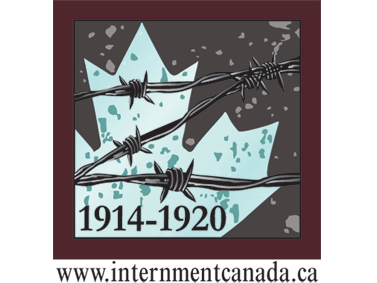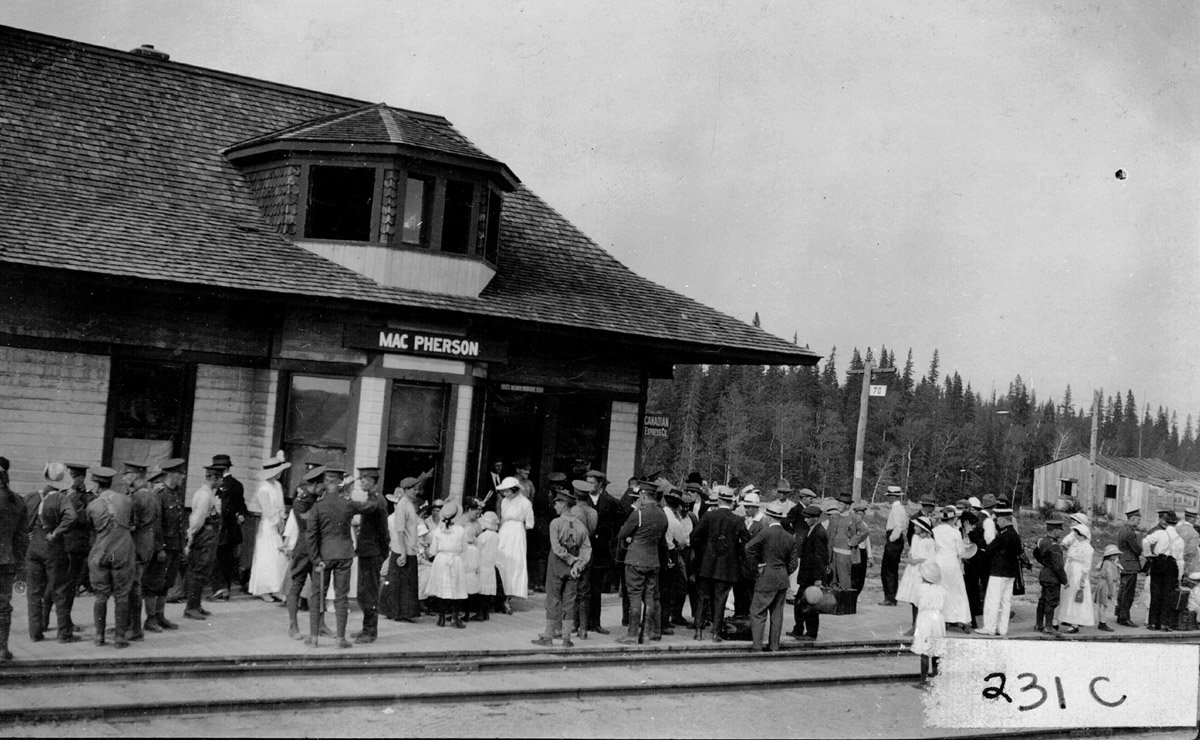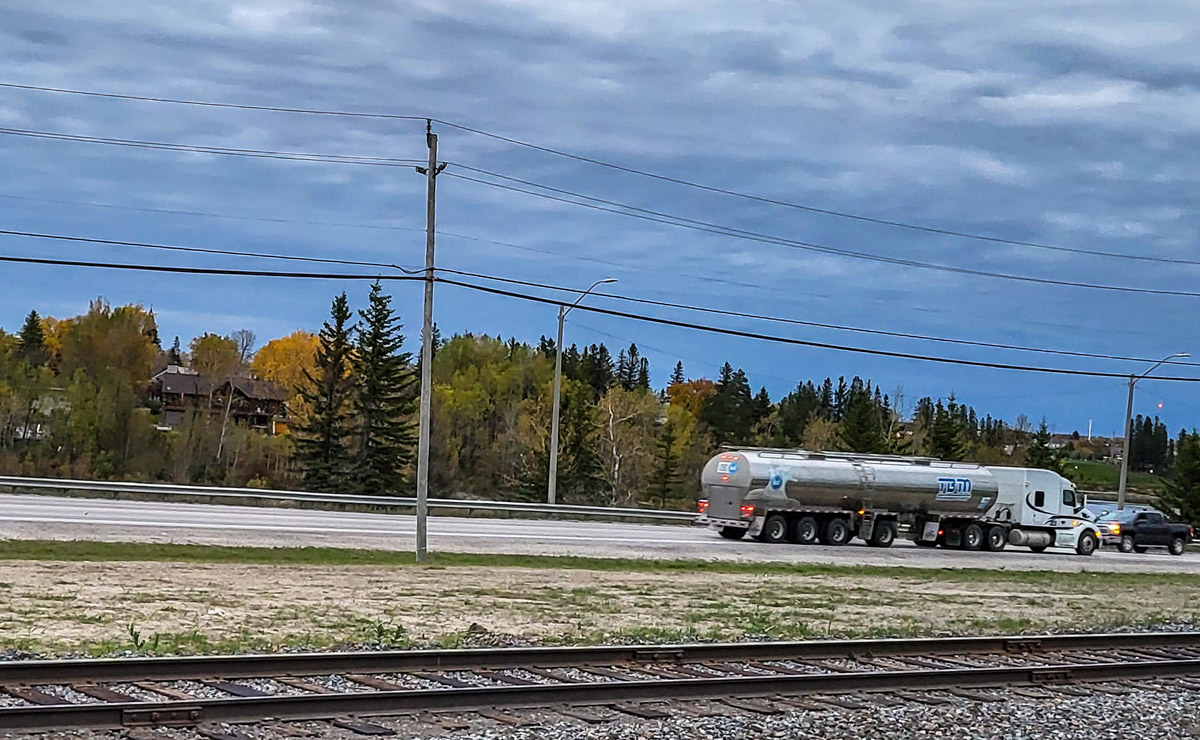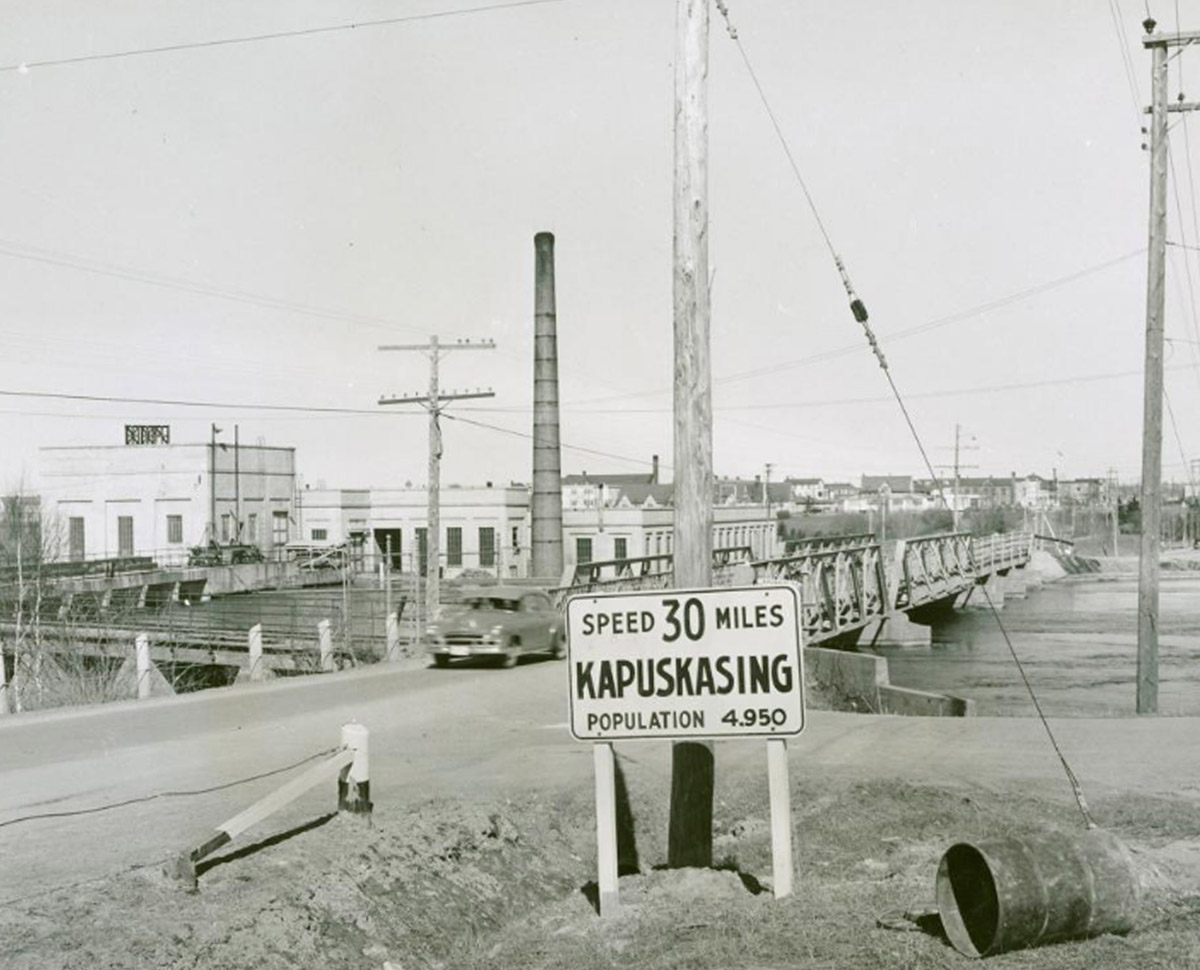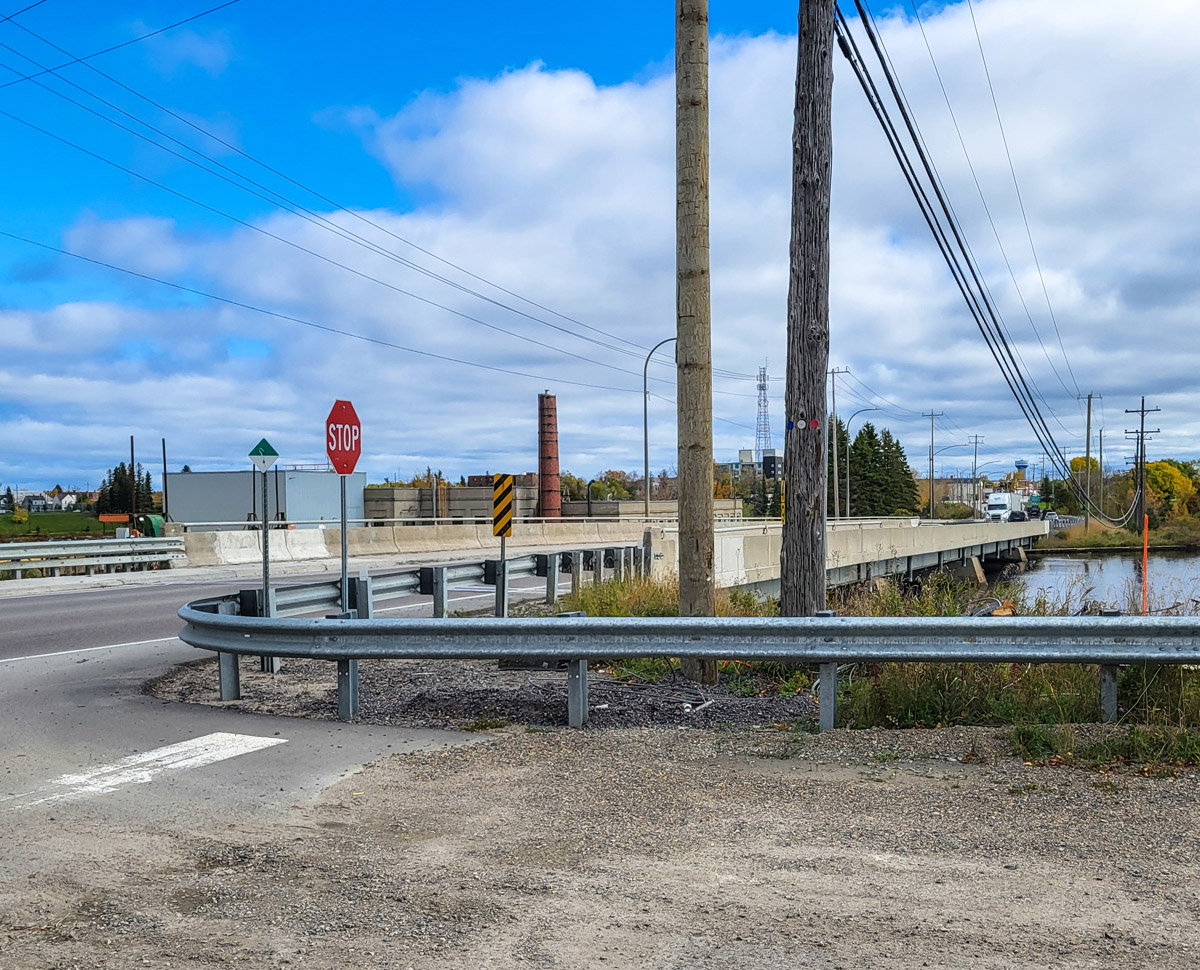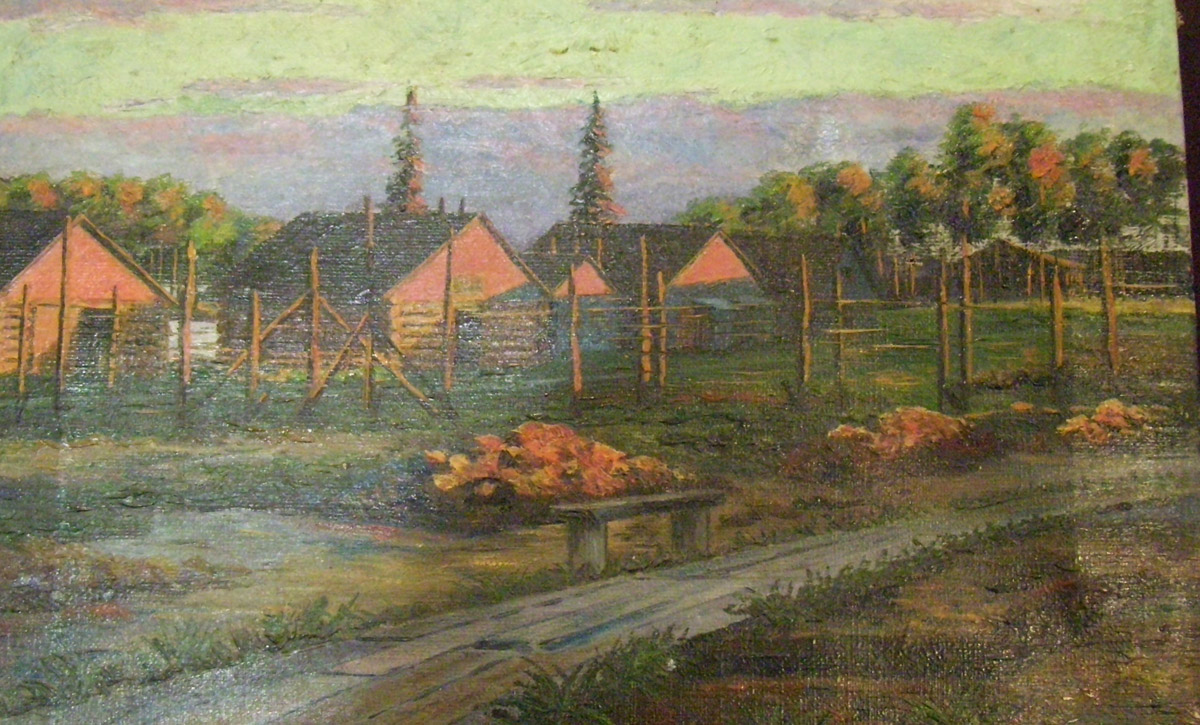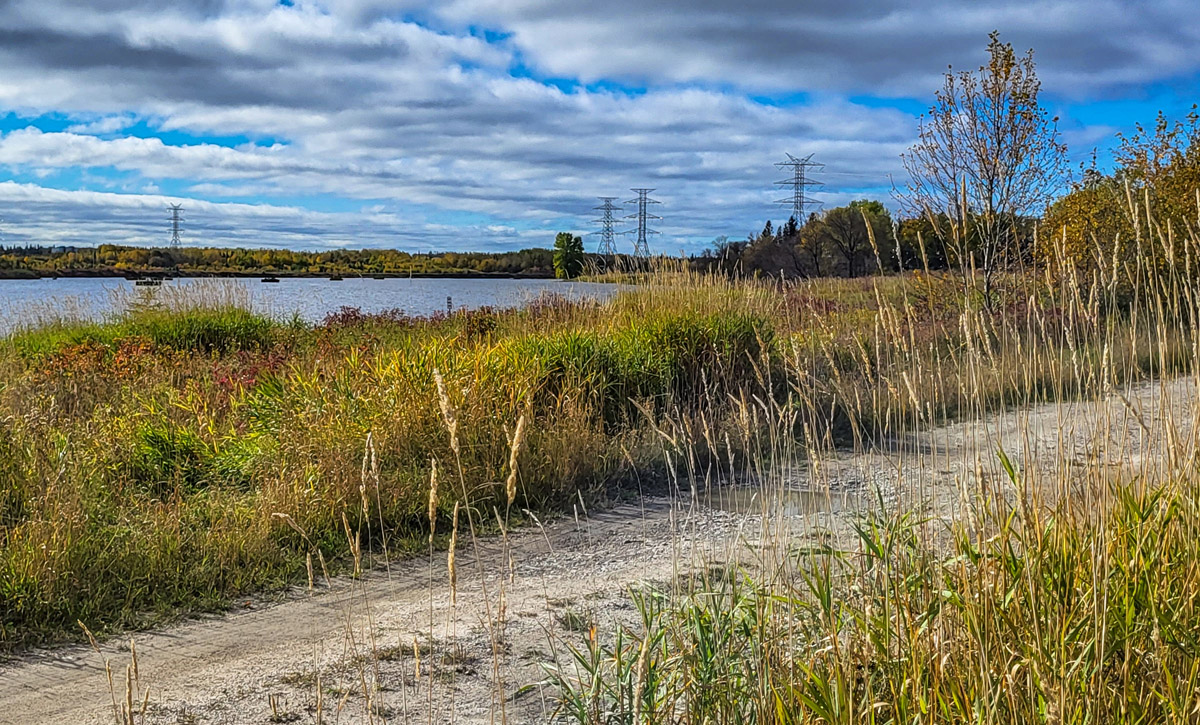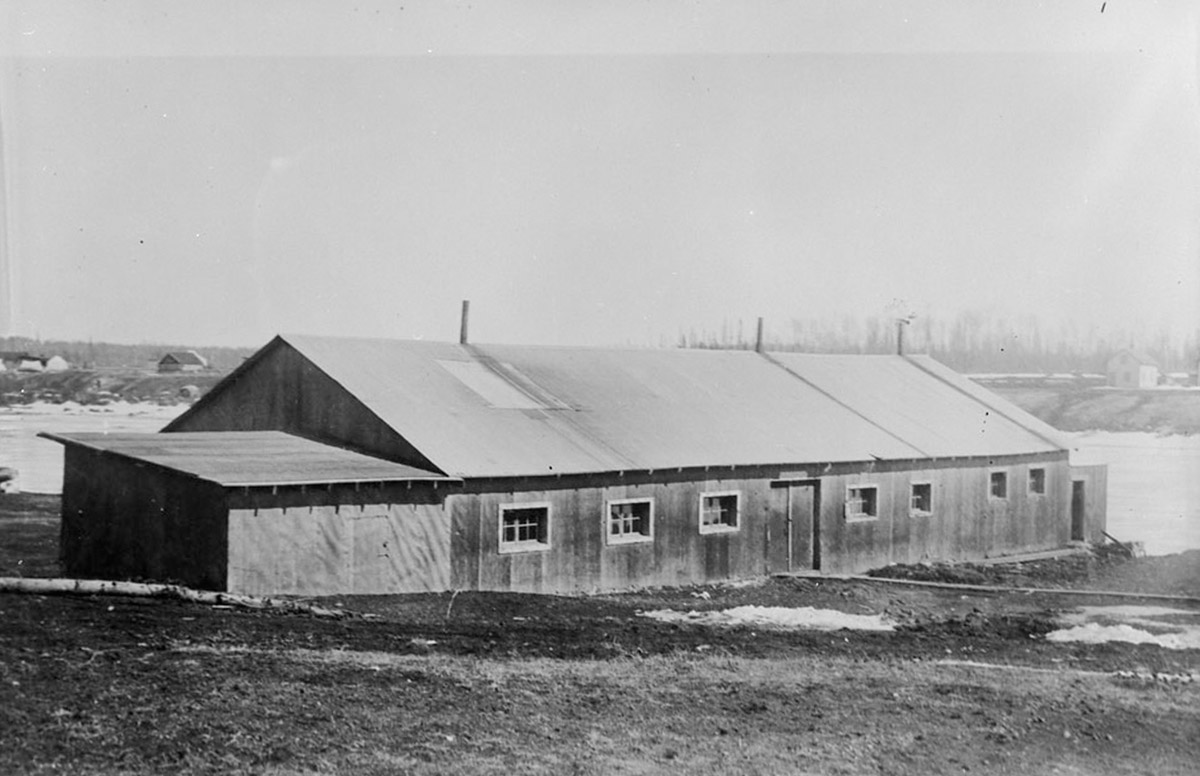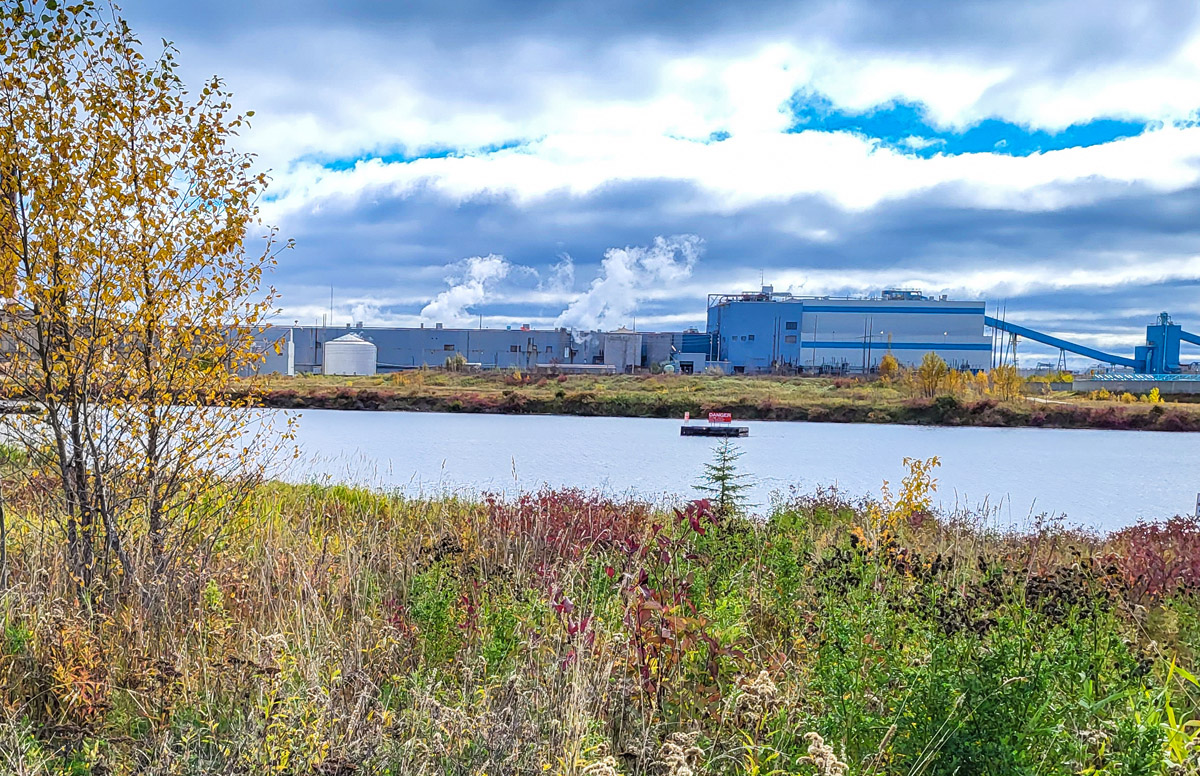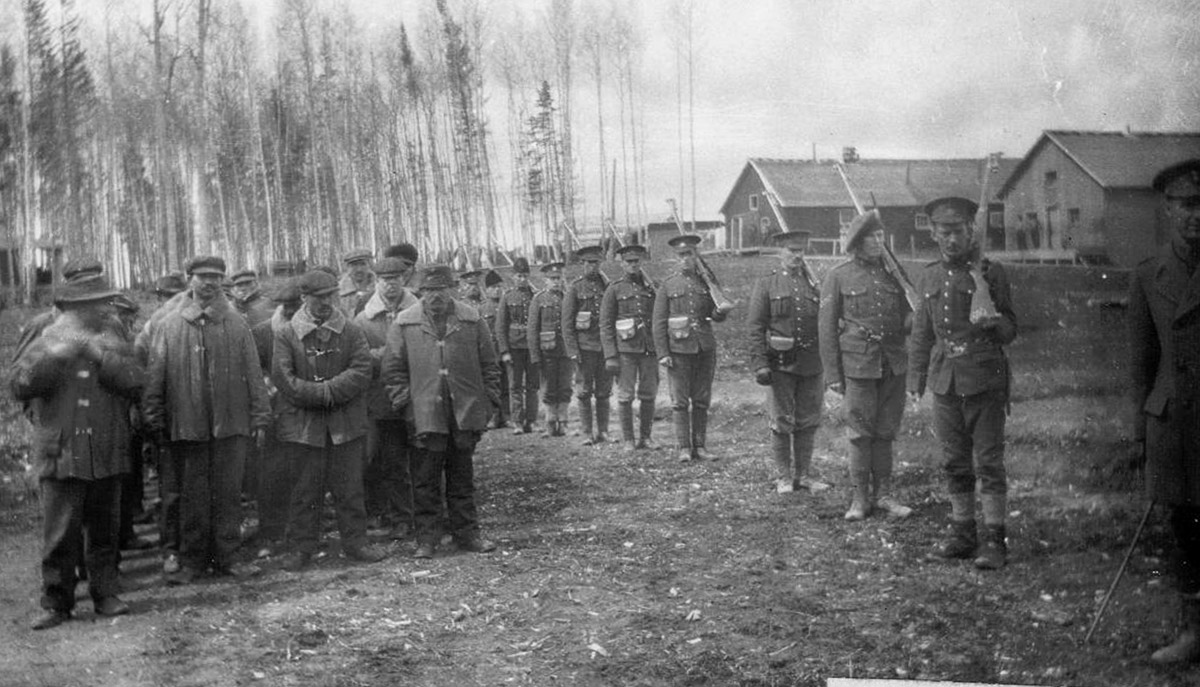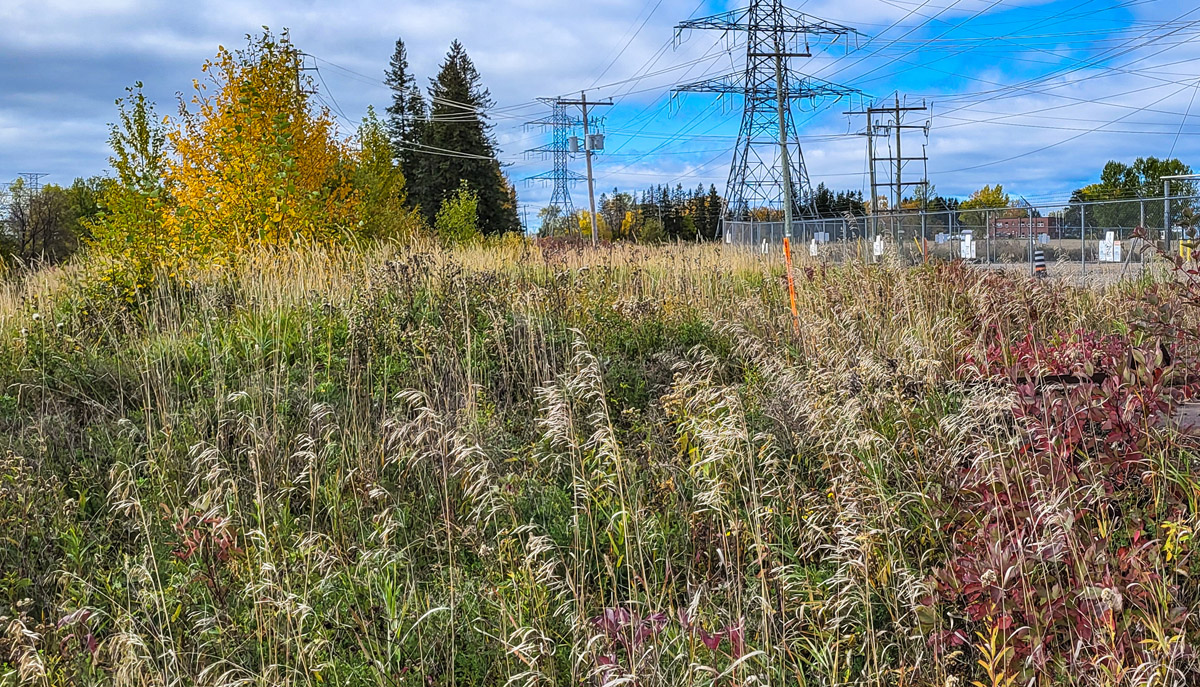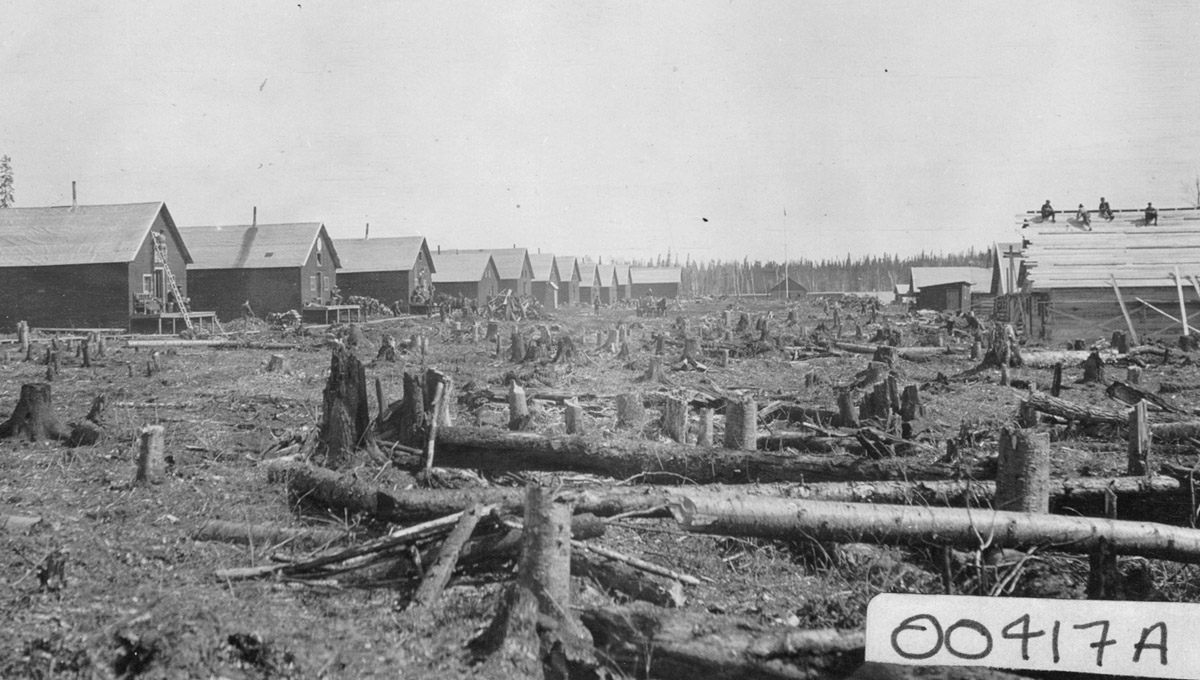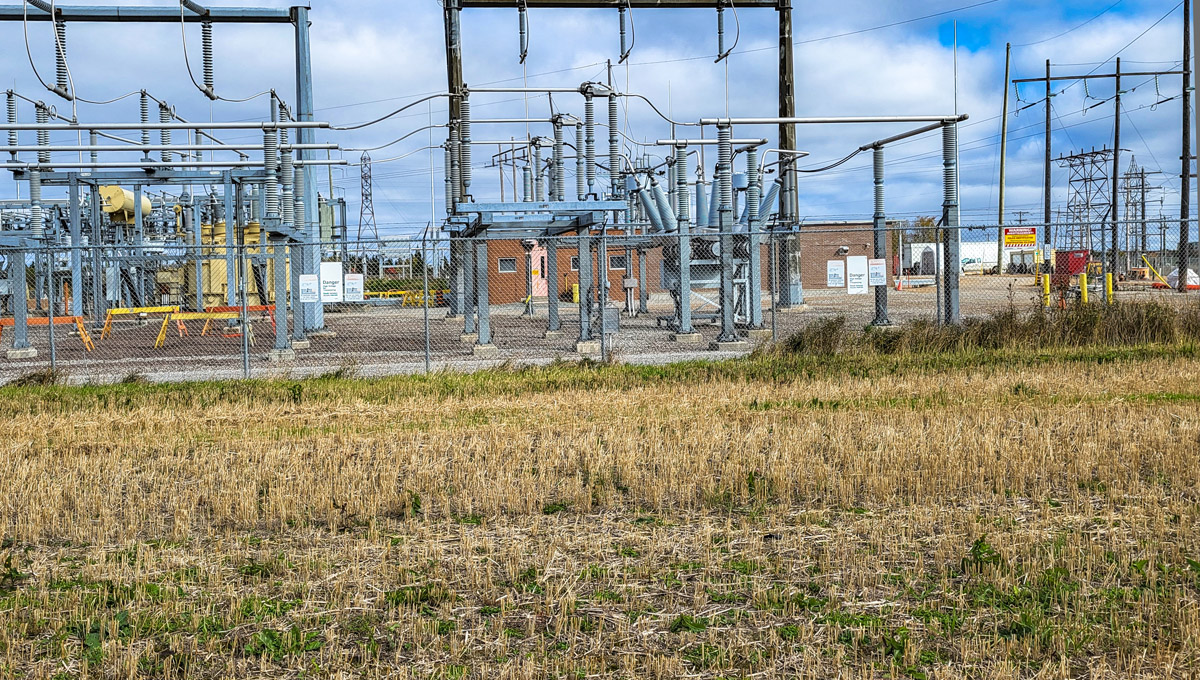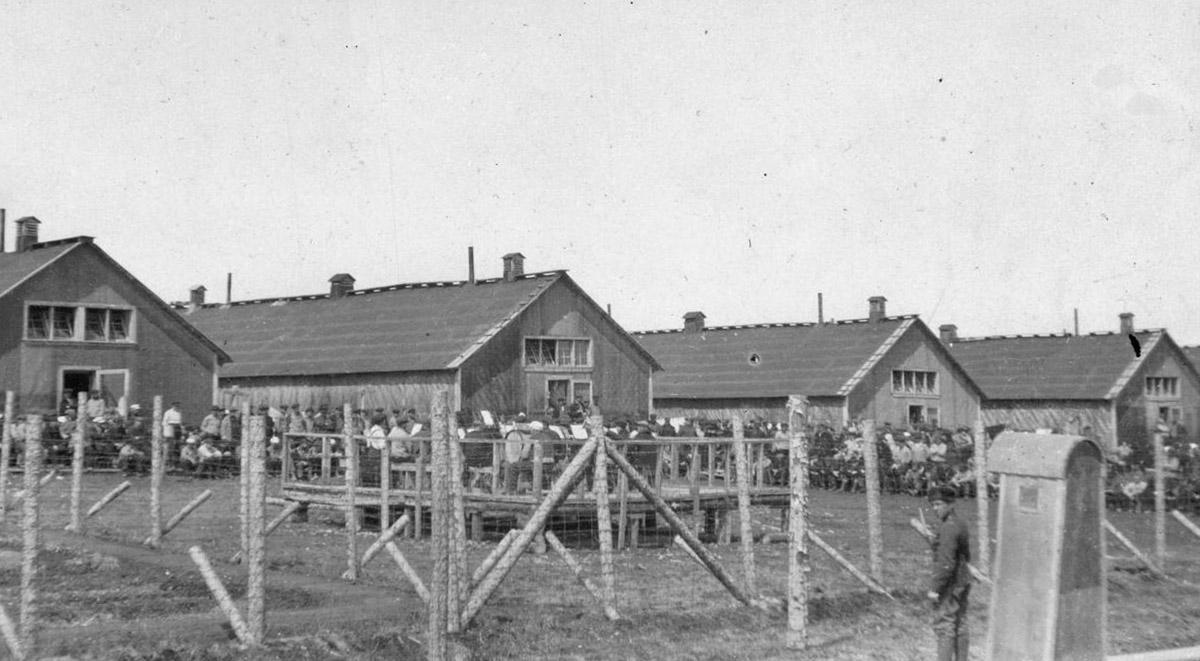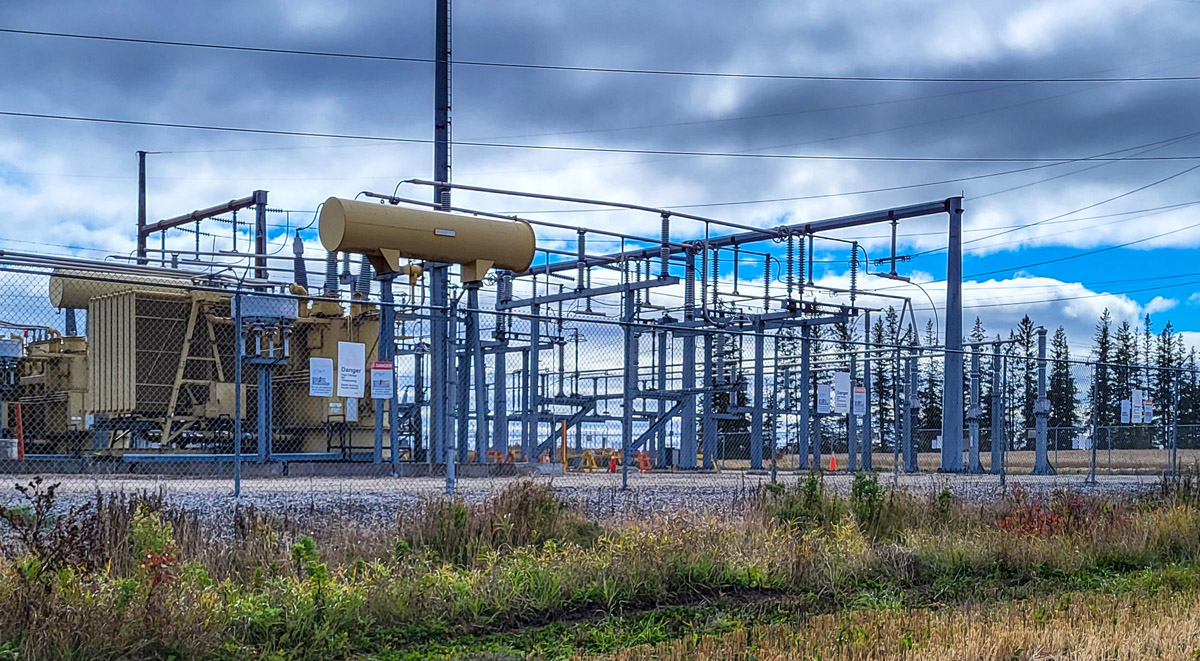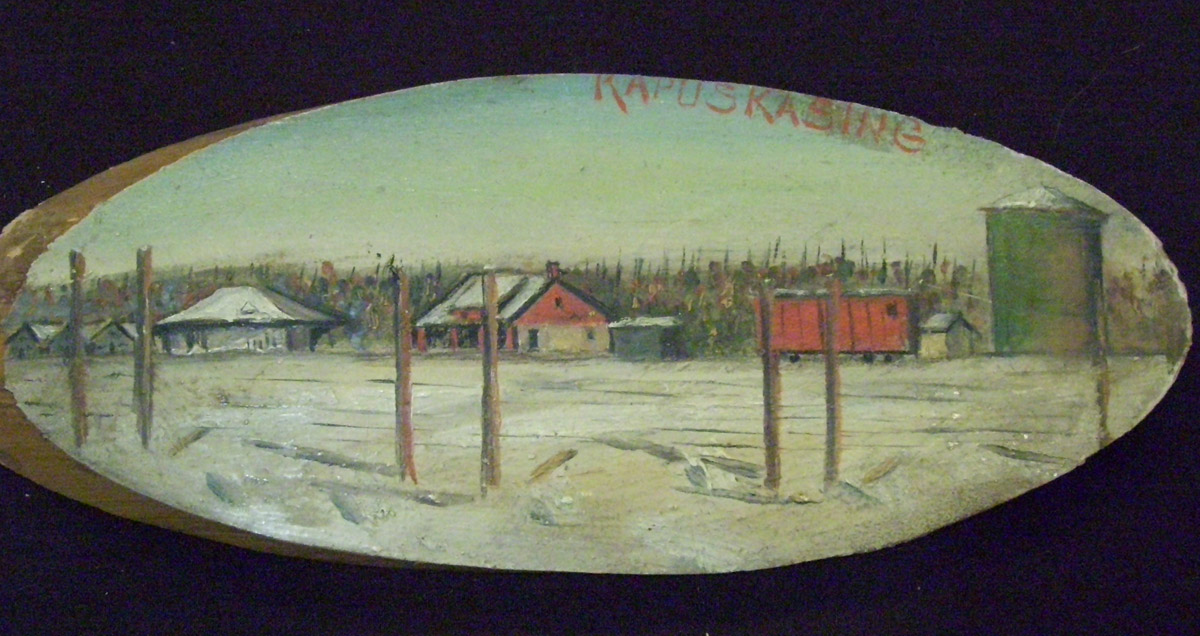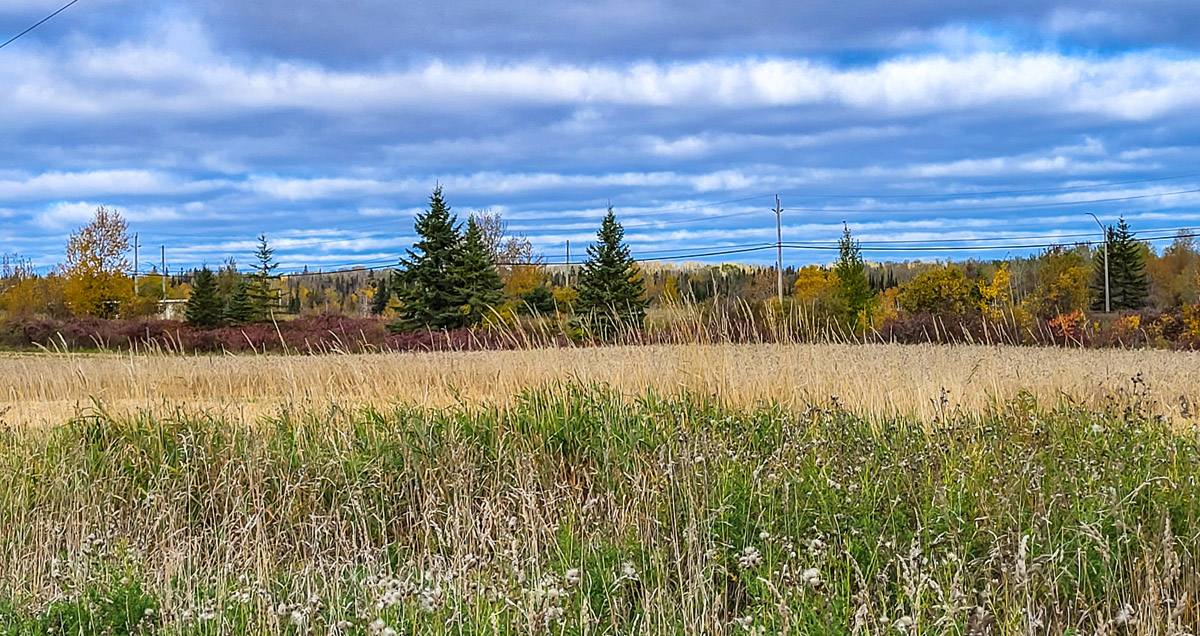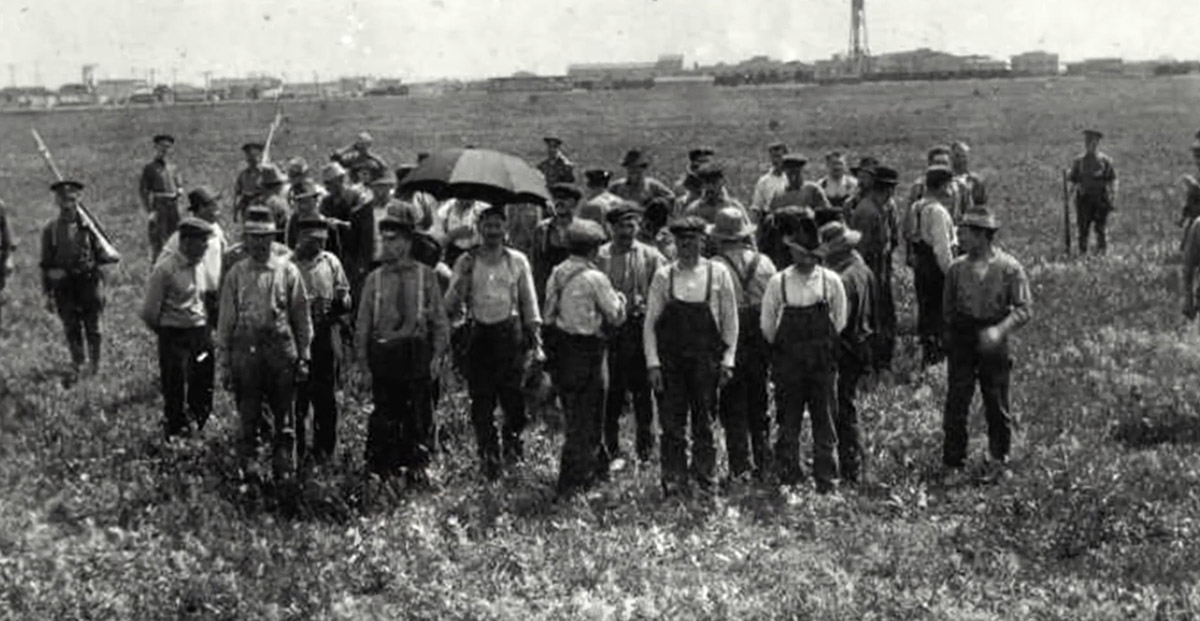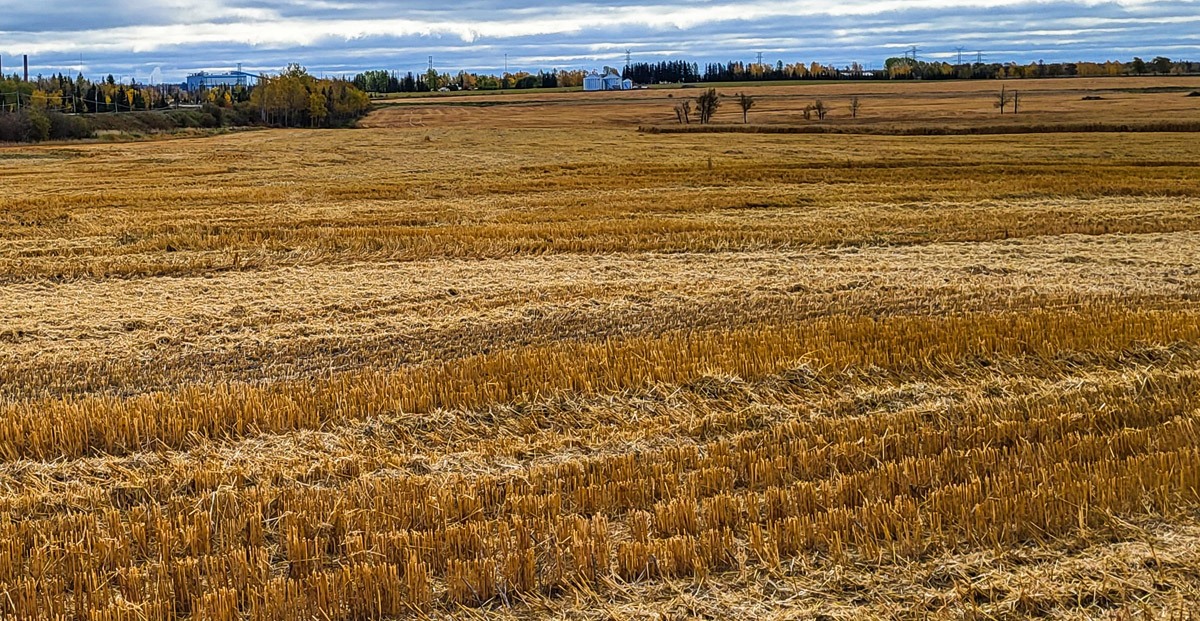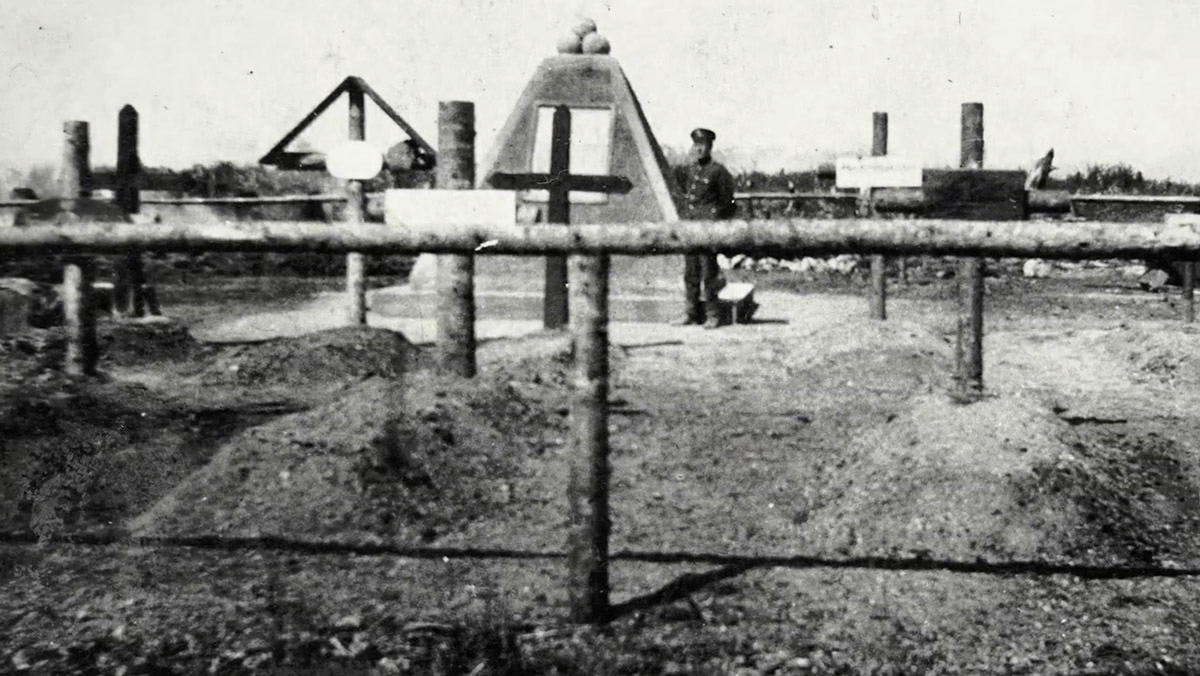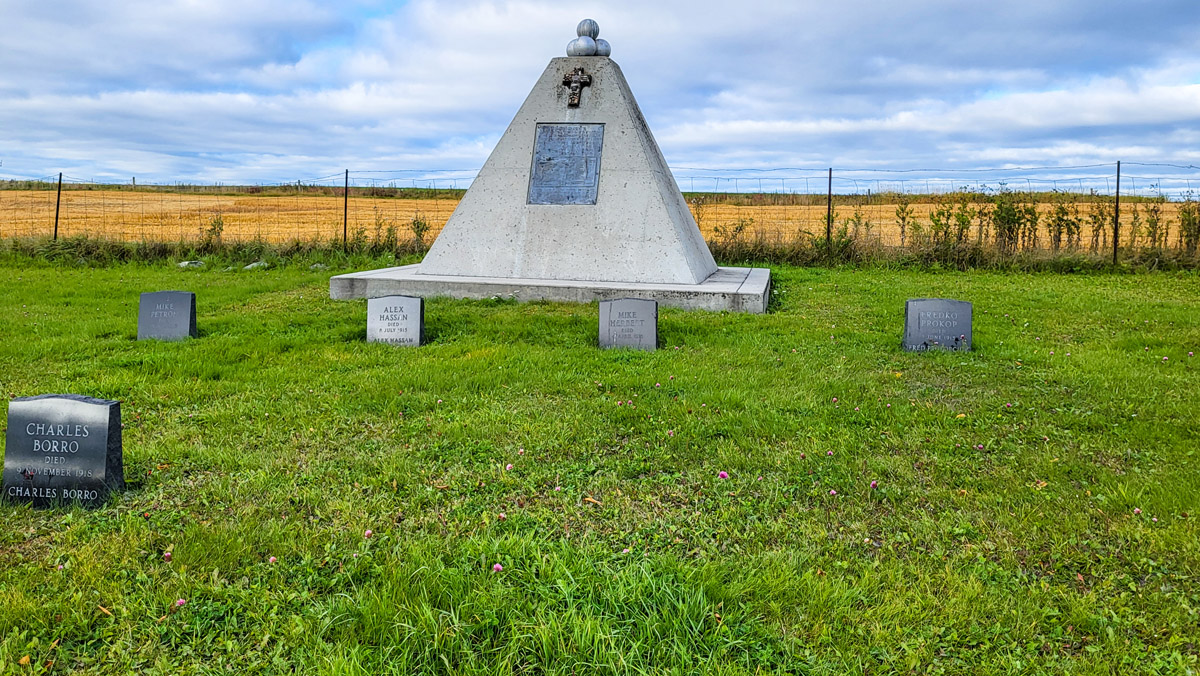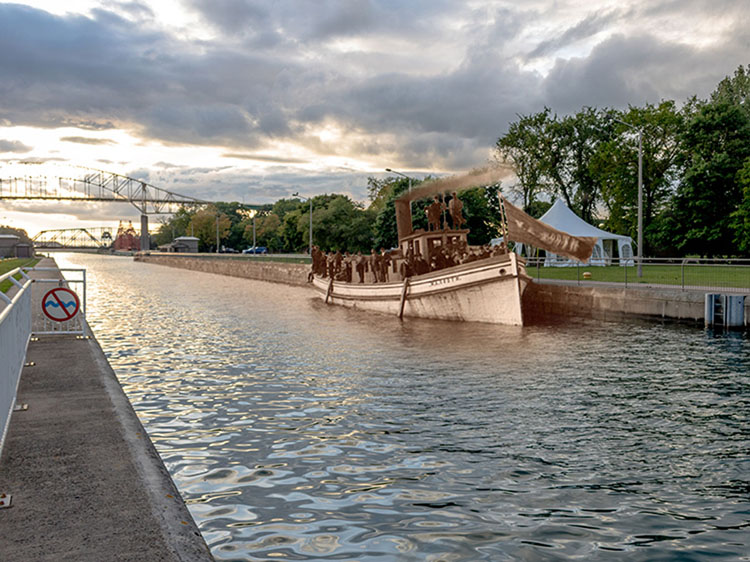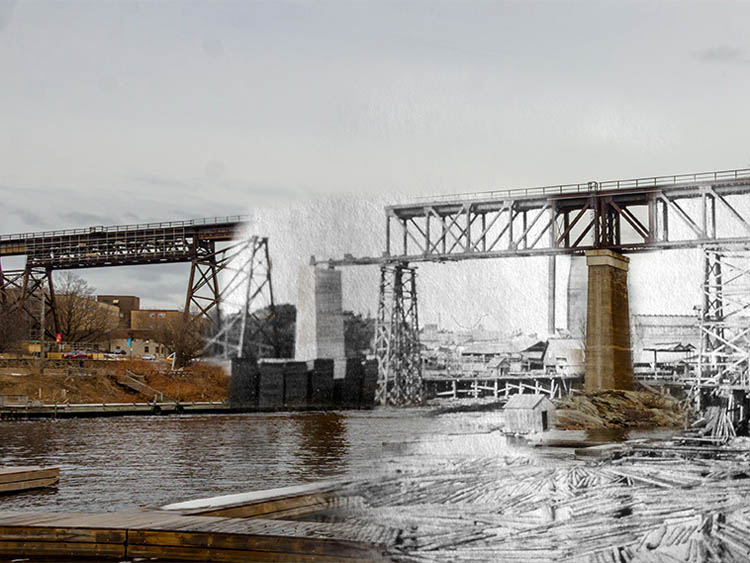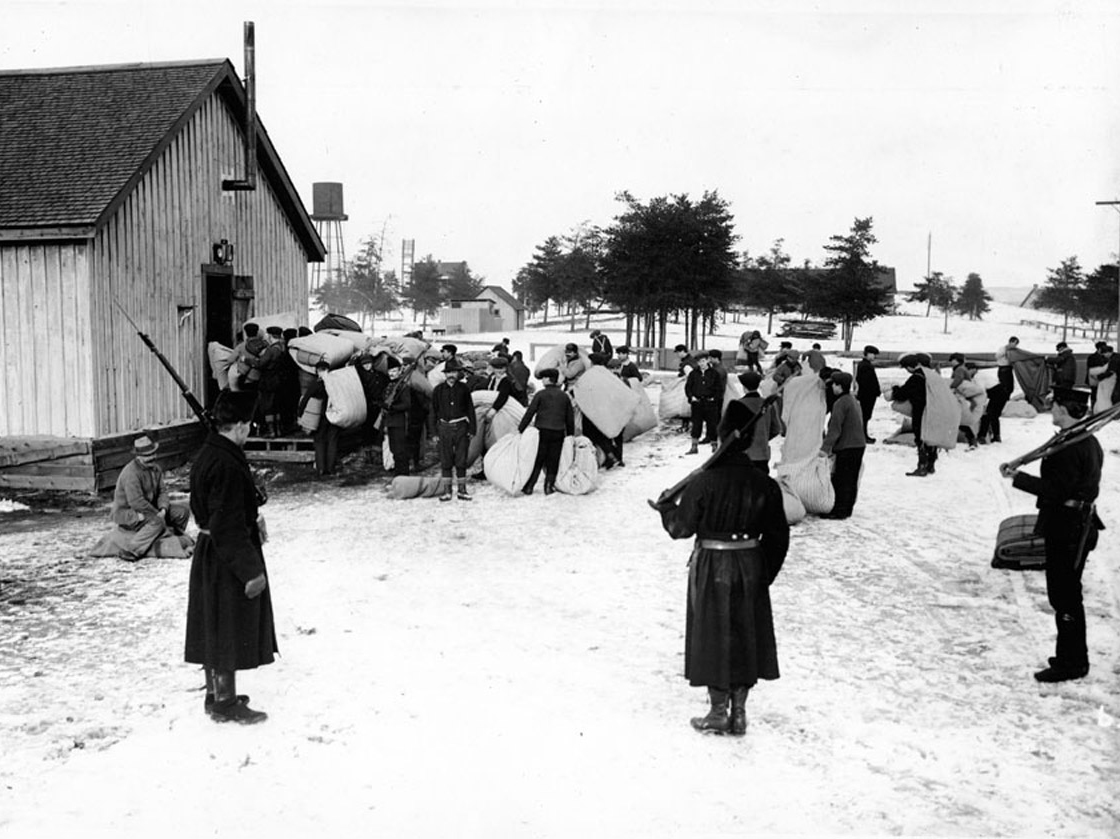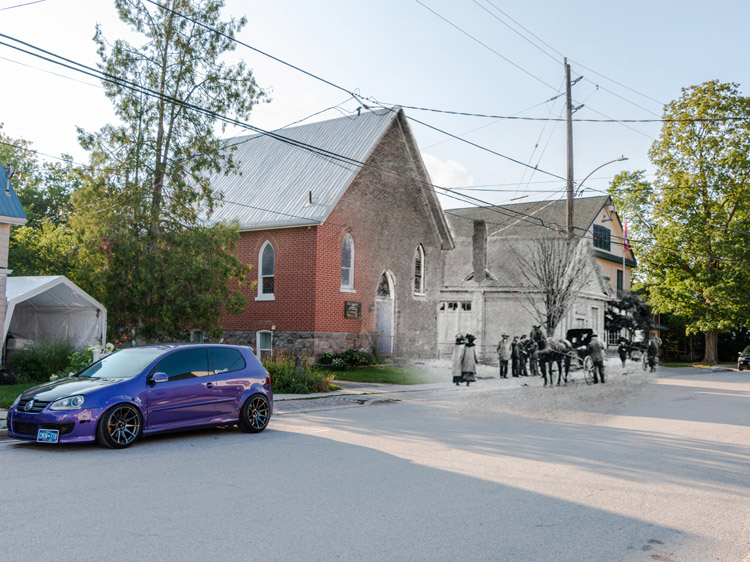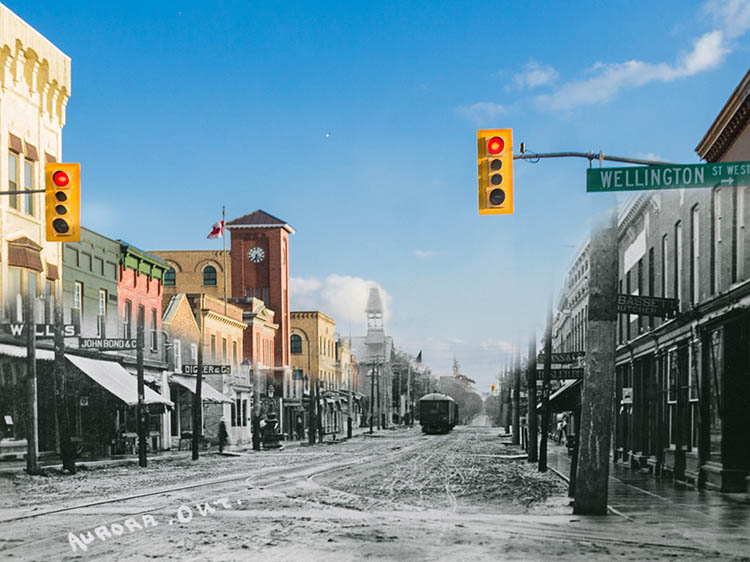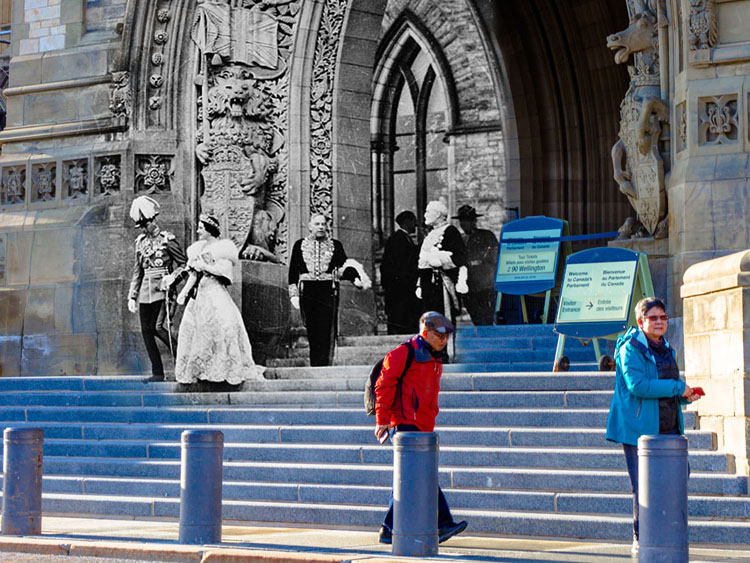Walking Tour
Walking Kapuskasing Camp
Exploring Canada's Dark History
Ian McKechnie
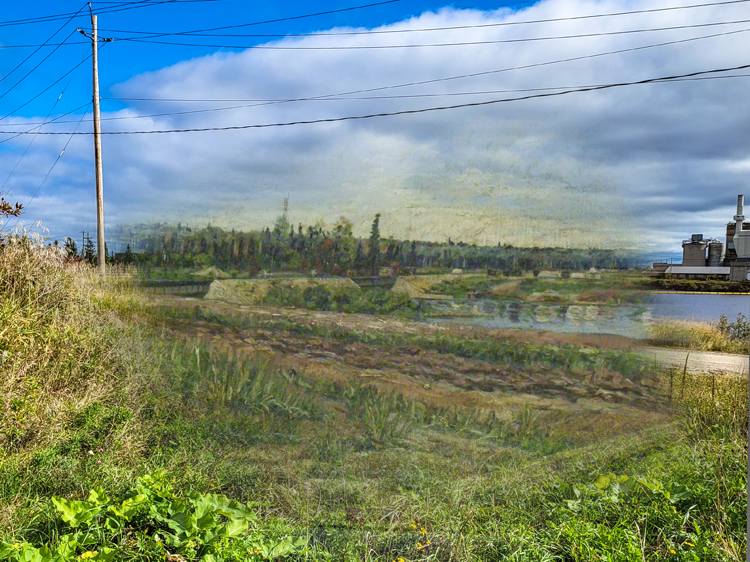
Kapuskasing, so named for a Cree word meaning "bend in the river," is a pretty little town situated on the Trans-Canada Highway some 130 kilometres northwest of Timmins. Like much of northern Ontario, it was settled in in the early years of the twentieth century; its economy centred around the fur trade, and later pulp and paper. The National Transcontinental Railway laid its tracks through what was originally called MacPherson Station in 1903 – a name it would retain through 1917, when it was replaced by Kapuskasing to avoid confusion with another MacPherson, in Manitoba.
Kapuskasing was a hive of activity in 1917 – not least because of a massive internment camp that had opened across the Kapuskasing River two years before. Over the course of the camp’s five-year lifespan, some 1,200-1,300 supposed 'enemy alien' internees from across Canada were sent here to work in unbearable conditions. When the camp opened in 1915, this place was little more than a railway siding.
Not only were their efforts supposed to expedite the development of this area, its remoteness made it ideal for keeping the internees isolated from Canadian society. Furthermore, the work of clearing this land would have been difficult and expensive to undertake with free labour. The internees were paid almost nothing, and could be made to work at gunpoint for long hours even in harsh winter conditions.
On this tour, you will pass through what was once one of the country’s most infamous internment camps: a place that prompted diplomatic disputes between Germany and Canada, saw poorly-trained and ill-disciplined guards trying to manage 1,200 civilian prisoners who saw no reason for their internment, and witnessed a riot in which one internee was killed and nine critically wounded.
Route
This tour will start at the railway siding where internees disembarked to begin their lives as forced labourers at the camp just on the other side of the tracks. The camp was located where the substation and farmer's is located today. You will then continue east a short distance along the side of the highway. At the river's edge turn right and cross the railway tracks and proceed down the dirt road. We will continue a short distance down the road to get some views of the camp's site.
Use caution when crossing the railway and avoid leaving the road to go on the farmer's field or onto the substation, which is private property.
Then you will return to your starting place before driving to the small internee cemetery located two kilometres down the highway to the west. The tour will conclude here. If you wish to walk or bike to the cemetery, please use caution on this stretch of busy highway. The cemetery is on the left side of the road, and can be easily identified by the grey statue of the internee by John Boxtel.
This project has been made possible by a grant from the Endowment Council of the Canadian First World War Internment Recognition Fund.
1. MacPherson Siding
Ron Morel Memorial Museum Archives
1914-20
A short distance west of downtown Kapuskasing is a former railway siding that went by the name of MacPherson. Save for the Canadian National Railway’s still-active right-of-way, nothing remains of this once-busy stopping-off point. The picturesque wooden structure and its attendant platform is long gone; the shrieks of locomotive whistles and the general hubbub of the railway station have since been replaced with the sound of traffic on the nearby Trans-Canada Highway, and the cacophony of nature.
This photo depicts families gathered on the station platform, mingling with uniformed soldiers. The First World War had been underway in Europe for a couple of years, and patriotic duty demands that every able-bodied young man sign up for active service. Pride and patriotism are keenly felt among those awaiting the arrival of the train.
* * *
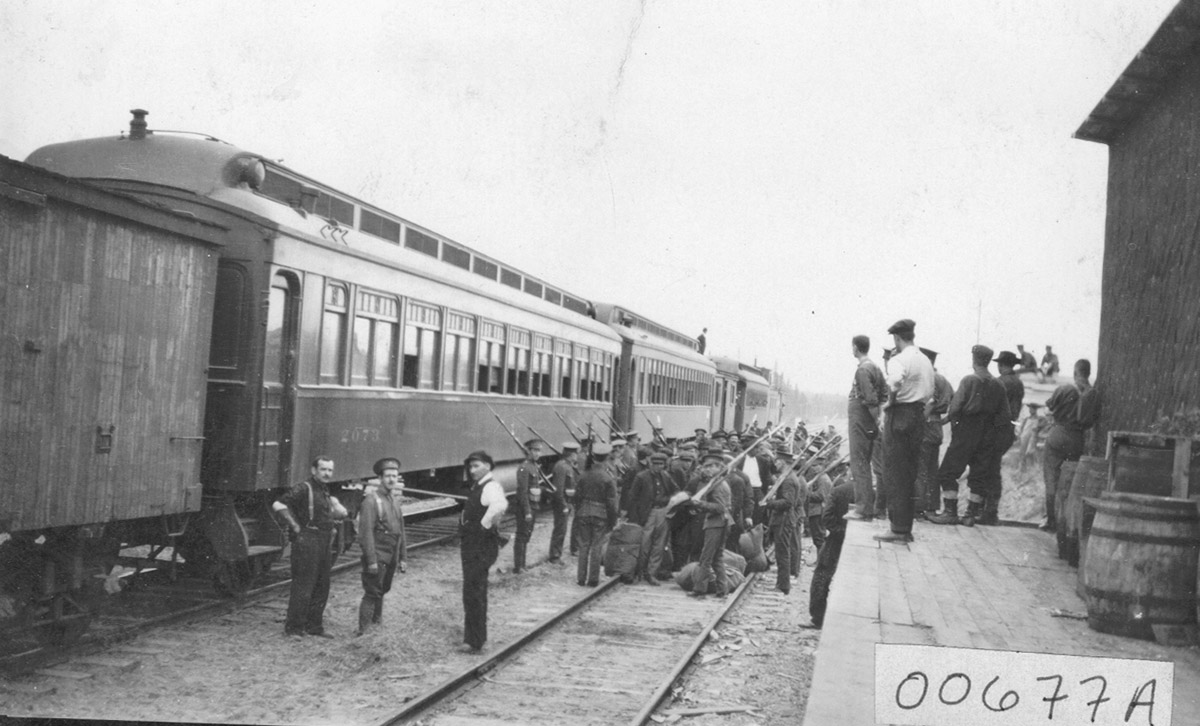
Soldiers surround a group of men, duffle bags in hand, who have just disembarked from the adjacent train. There are no women or children present, and there is an unmistakable air of unease and the implied threat of violence. These men are internees prisoners, their destination the internment camp just across the field from where this station once stood. Why are they here?
These men had immigrated from the countries that Canada was now at war with. They were not spies or traitors. The reason for their internment was much more banal: In 1914, many businesses began firing their employees from those enemy countries, creating a very serious homelessness problem. The government of Canada responded by legally redefining them as enemy aliens, stripping away almost all of their rights, and criminalizing homelessness and poverty amongst them.
Destitute and helpless, thousands of central and eastern European immigrants (over half were Ukrainian) were arrested and sent to internment camps.
In January 1915, the internment camp at Kingston's Fort Henry had become far too overcrowded. As a result hundreds of Ukrainian, Polish, Croatian, and Turkish (among other nationalities) were put on trains and transferred here. They were to clear the ground, build themselves a prison camp, and then build a government experimental farm. The Ontario government, which was overseeing the project, hoped this would pave the way for settlement of this undeveloped region.
2. Kapuskasing City Limits
1914-20
Immediately south of the Trans-Canada Highway and the railway tracks is an unassuming gravel access road, scarcely wide enough for a single vehicle to pass. Today, it is used by Hydro One maintenance crews as they make their way to and from an electrical substation across the river from downtown Kapuskasing.
A photo from the 1950s shows a sedan motoring across the old bridge perpendicular to this access road, passing a sign that warns motorists to reduce their speed and announces that Kapuskasing has a population of 4,950 people.
* * *
Thanks to a cost-sharing agreement between the Ontario government and the federal government beginning in February 1916, the province benefited from a significant amount of internment labour undertaken at the expense of the federal government. Thus did internment operations take advantage of Canada’s federal system, with money being saved and much-needed work getting done in developing northern Ontario’s transportation infrastructure. The work was arduous, and was overseen by guards whose selection left much to be desired.
3. The Guards' Barracks
Ron Morel Memorial Museum Archives
1914-20
As you make your way along the well-trodden path adjacent to the Kapuskasing River, you might hear the bucolic sound of birds chirping in nearby trees and insects buzzing among the tall grass growing along the water. As with other former internment sites, Mother Nature has largely reclaimed what once was. Other sounds reechoed through this site more than a century ago: the beat of marching footsteps as soldiers and internees went about their daily round of tasks, the cruel commandments issued by guards, and the utterances made in Ukrainian, Polish, and a dozen different tongues as internees from these nationalities endured yet another day of hard labour.
* * *
One of the guards assigned to Kapuskasing was Watson Kirkconnell (1895-1977), who would go on to enjoy a long career in academia, eventually becoming the Principal of Acadia University. "Ignorant, sullen, inert, the mass of these interns were the very incarnation of passive resistance," an unsympathetic Kirkconnell wrote of his Kapuskasing experiences in 1921. "They worked because they were compelled, and they exerted themselves as little as possible, though by dawdling steadily they accomplished much through sheer force of numbers."2
4. Bunkhouses
Ron Morel Memorial Museum Archives
1914-20
On this spot a vast bunkhouse once stretched out across the bank of the Kapuskasing River. Utilitarian in appearance, it was built to house some 400 personnel assigned to the community’s internment camp. Between guards and government staff, the camp was one of the largest in Canada and was operated in a large part to facilitate the development of northern Ontario.
* * *
Looking out across the Kapuskasing River today, one sees several red-and-white signs used to warn navigators of impending danger should they get too close to the nearby dam. More than a century ago, the foreboding sight of the bunkhouse and other buildings on this spot signified danger to the thousands of internees who toiled here for five years.
5. Under Guard
Ron Morel Memorial Museum Archives
1914-20
Tramp, tramp, tramp. "Move along – quick now!"
Such stone-cold commands would have been heard day in and day out had you been standing on this location during the height of internment operations. For it was here that prisoners of war were routinely lined up and marched off to various worksites by guards who – despite the rhetoric of authorities who claimed otherwise – cared little for the welfare of those in their supervision. The government claimed that the latter could be a threat to Canada’s security, and internment was deemed to be the most expedient solution in the face of an increasingly-paranoid public. In reality, the main driver of the internment of these men was to keep them from competing for scarce jobs in 1914 and 1915.
* * *
For many, the toxic combination of harsh working conditions, isolation, and the sheer injustice of internment proved to be too much. The spring of 1916 saw a riot at the Kapuskasing camp, in which 300 recently-arrived prisoners from Petawawa refused to work on a religious holiday. They simply went on strike. Other internees, inspired by their resistance, took up the common cause and joined in the protest. Before too long the 1,200-strong prisoner population was engaged in a full-scale riot. Vastly outnumbered, the 300 guards charged into the crowd with bayonets. One person was killed and many others were critically wounded.
Today, the grounds where prisoners were once marshalled into formation is an overgrown berm adjacent to humming electrical infrastructure. The scene presents a peaceful contrast to what both prisoners of war and insufficiently-trained guards witnessed from 1915 through 1920.
6. Barracks & Stumps
Ron Morel Memorial Museum Archives
1914-20
A dizzying array of transformers and other electrical infrastructure towers over you as you step off the dirt path separating Hydro One’s substation from the Kapuskasing River. All of this is surrounded by a high chain-link fence, designed to keep people out and away from danger. More than one hundred years ago, barbed wire fences were erected to keep people in – prisoners of war, whose every movement was closely monitored by guards.
* * *
Long gone, these stumps symbolize the mindset behind internment. Owing to their cultural roots, internees would be cut down in spirit as they were shipped off to camps like that at Kapuskasing and made to work in miserable conditions. As historian Bohdan S. Kordan has so aptly put it, "internment was a policy used to address the core problems of enemy alien unemployment and destitution, as well as the anxiety and resentment of the broader population."
7. An Internee Orchestra
Ron Morel Memorial Museum Archives
1914-20
This image was taken from the other side of the substation, but we have mapped the spot to here.
In this image we can see a crowd of internees, many sitting and some standing, watching a small internees orchestra playing on a bandstand. Reprieves like this from the monotony of hard labour and the threat of violence from the guards, were rare but most welcomed. The camp authorities allowed events like this, feeling that they would help prisoner morale, and make them more likely to work harder, and perhaps less likely to refuse orders and revolt.
* * *
Awakened each morning by the bark of guards and officers, internees underwent mandatory physical exercise and military-like inspections before being marched out to various worksites to cut timber, clear bush, or build roads. In doing so, they had to contend not only with the gruff and often brutal manner of the prison guards, but also the multitude of risks associated with demanding labour in an unforgiving environment. Canadian historian Desmond Morton—coincidentally a grandson of Sir William Otter, the commander of Canada's First World War internment operations—described the process in no uncertain terms. "It had not been accomplished with enthusiasm or without pain on the part of prisoners.... Hospital records listed a toll of chopped and frozen hands and feet."
8. Painting in Prison
Ron Morel Memorial Museum Archives
1914-20
This image was taken from the other side of the substation, but we have mapped the spot to here.
Artistic output among internees at Kapuskasing was not limited to music. Many prisoners of war demonstrated skill with a paintbrush, and the folk art they left behind offers a unique insight into how they passed time. Like the pictures taken by government photographers, this art invites us to ponder what sort of thoughts were passing through the minds of those kept behind the barbed wire. Today the Ron Morel Museum, located just across the river, hosts a phenomenal collection of internee art.
* * *
What was going through the artist’s head as he painted? Was he contemplating family left behind elsewhere in Canada? When he might be released and board a train for freedom? How others would benefit from the landscape he and his fellow internees had risked life and limb to clear so they could develop what was expected to be prosperous farmland?
We may never know. Still, paroling began to gradually happen as camps were consolidated over 1916 and 1917. To make up for a desperate shortage of labour, many of these prisoners were assigned to work on track gangs for the burgeoning Canadian Northern Railway; others were sent to factories busily churning out products for the war effort. A number of internees previously held at Kapuskasing went east to work for Nova Scotia’s massive Dominion Iron & Steel Company in 1917.
The barbed wire would eventually come down, and the experimental farm adjacent to the internment camp was abandoned by 1920. After five years, internment was over. Sadly, many prisoners died while at the Kapuskasing camp. They are buried in a small cemetery up the road from here, a quiet place of contemplation and remembrance where you will finish your tour.
9. Mourning their Comrades
Ron Morel Memorial Museum Archives
1914-20
To reach this spot drive west on the Trans-Canada Highway for several kilometres until you reach the small internee cemetery on the left side of the road.
In this photo we see a little party of internees that have come to the cemetery to hold a small funeral service for one of their comrades who has perished while imprisoned at Kapuskasing. Even in this solemn moment of collective grief, they are surrounded by armed guards with fixed bayonets. The sweltering summer heat is clearly evident from the parasol one prisoner has managed to secure.
* * *
It’s hard to imagine what these men had to go through. They had been invited to Canada to build new lives for themselves. They were promised opportunity and land. Few of the men buried in this cemetery could have imagined that this was where their dream would end. Their names are etched in the recently restored stone markers to remind us of Kapuskasing’s place in this dark chapter of Canadian history.
10. Remembering
Ron Morel Memorial Museum Archives
1914-20
Charles Borro. Alex Hassan. Mike Herbert. Andrzej "Andrew" Kuzyk. Mike Petron. Fredro Prokop.
These men number among the twenty or so internees who rest at Kapuskasing’s internee cemetery just up the road from where they lived and toiled during the First World War. Most died from injuries and disease, victims of the camp's brutal working and living conditions. They were also victims of a patently unjust policy in which people who were deemed to be "enemy aliens" on account of their country of origin, were rounded up by police, taken from their loved ones, and sent to suffer in this camp.
* * *
More than a century on, when xenophobia raises its ugly head in public discourse, the tragedy of how our country treated its own citizens during First World War internment operations is something we must never forget.
Donate Now
If you enjoyed this free content, we ask you to consider making a donation to the Canada-Ukraine Foundation, which is providing urgently needed humanitarian aid to Ukraine.
The Ukrainian people are heroically defending their homeland against a genocidal war of Russian aggression. The humanitarian situation is critical and the needs immense. 100% of all donations made through this link go directly to supporting the people of Ukraine. Recently funded initiatives by the Canada-Ukraine Foundation include demining and removal of unexploded ordnance, and the evacuation of thousands of deaf people from the warzone.



